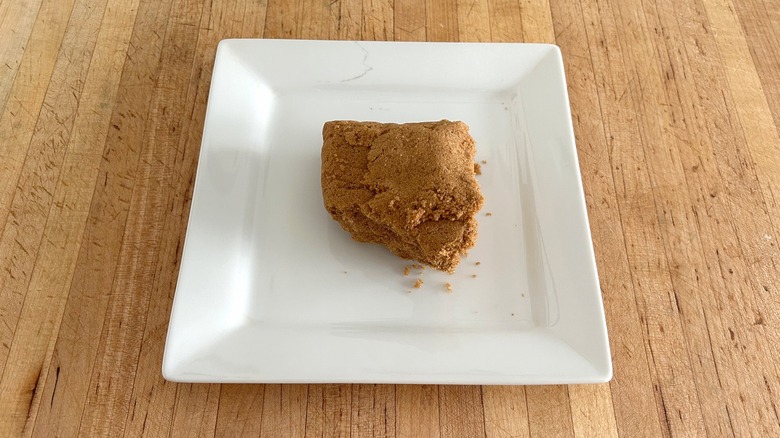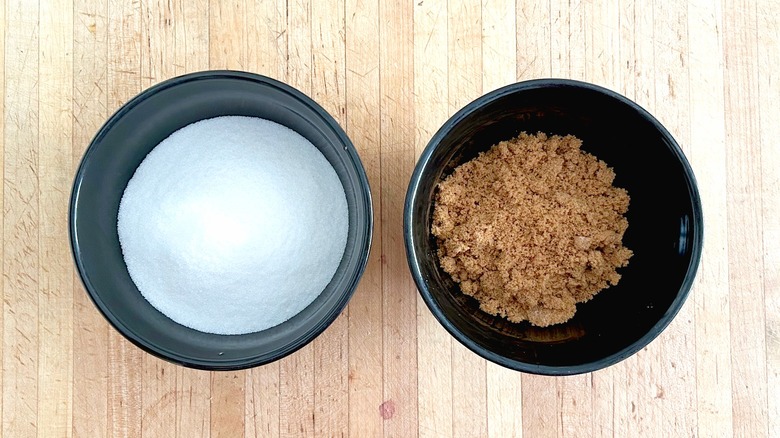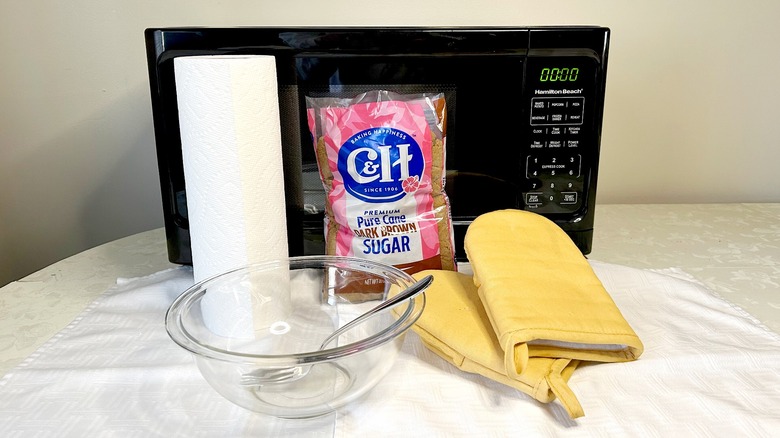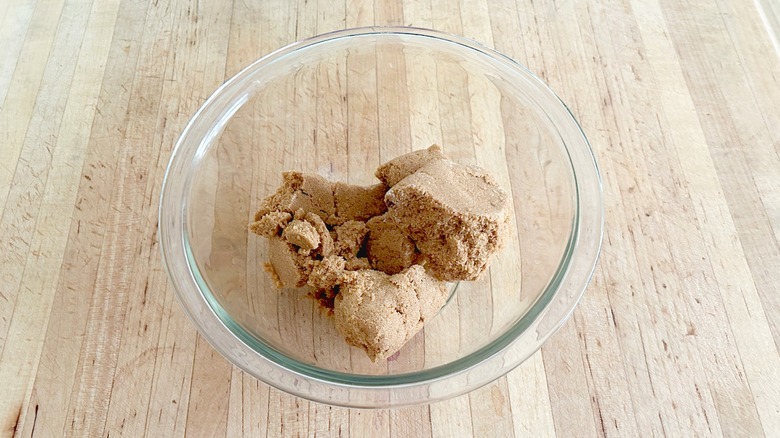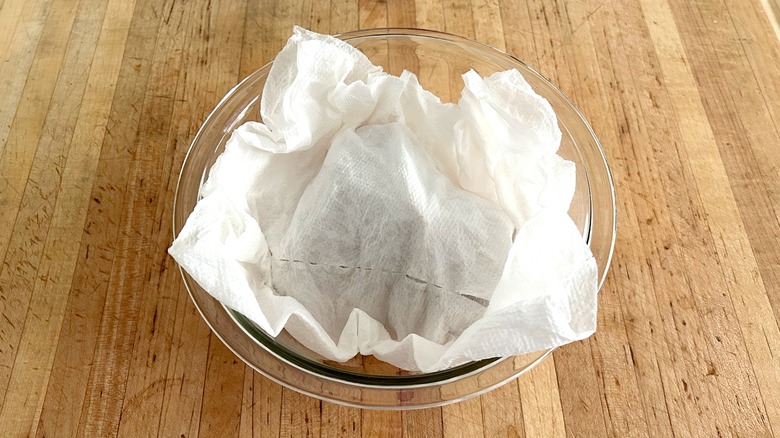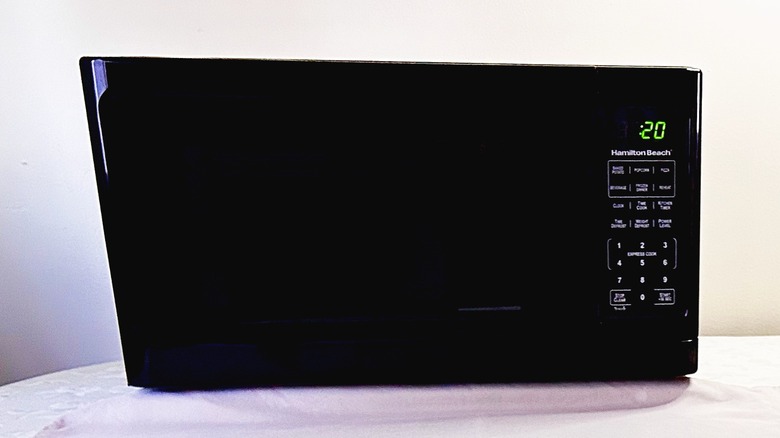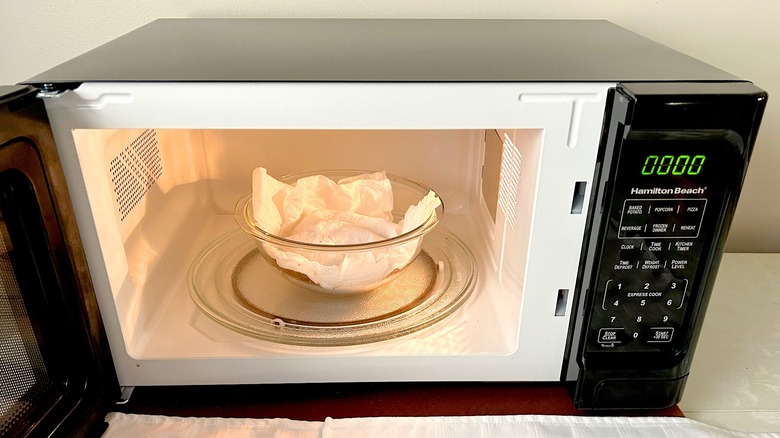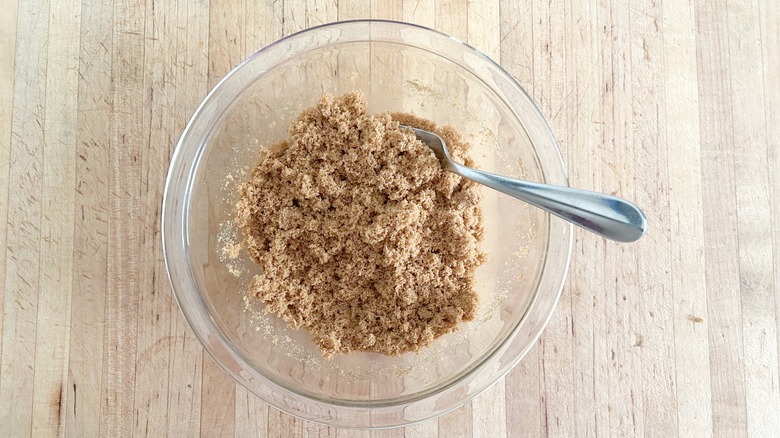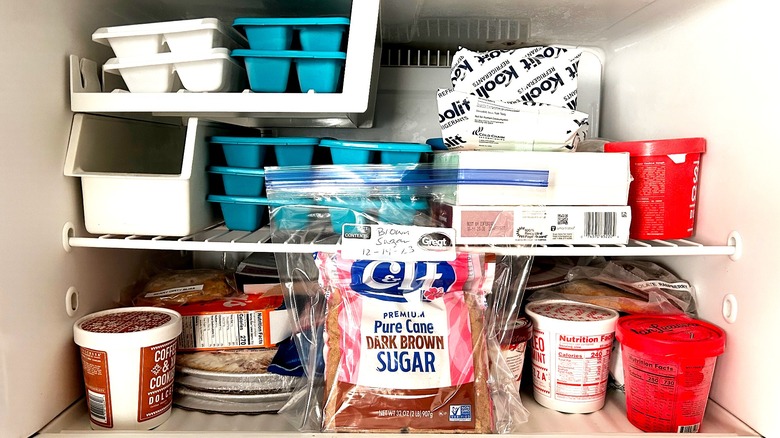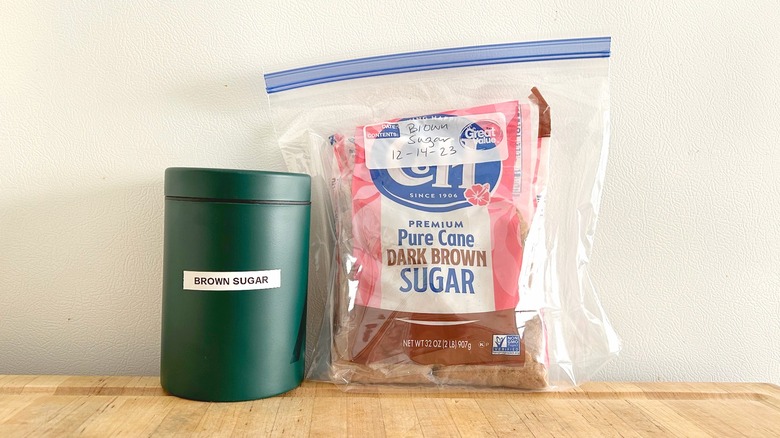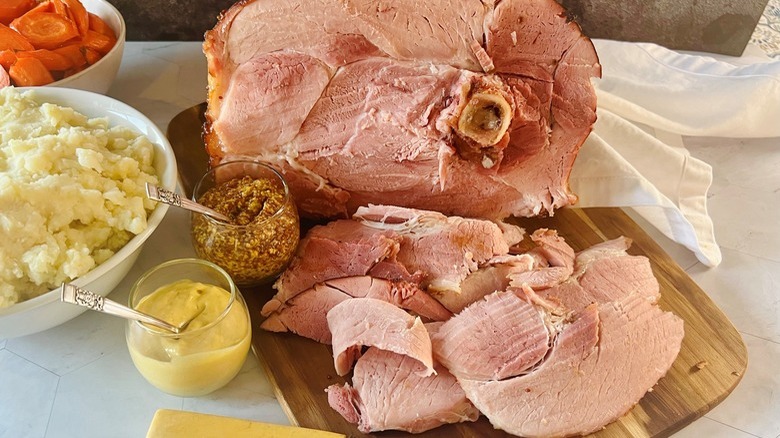How To Soften Brown Sugar In 6 Easy Steps
Brown sugar is one of those ingredients that provides rich caramel flavor, chewy texture, and a deeper russet hue in recipes across the board, from sweet to savory. But how many times have you pulled out your bag of sweetener only to discover something less like granules and more like a concrete slab?
It happens frequently, and you may not have the time to drop everything to run to the store to obtain a replacement bag. All may not be lost. There is a way to take hardened brown sugar and return it to its softened state in just a few minutes so you can continue baking those cookies or making that barbecue sauce immediately.
All you need are a few simple tools and tips to turn you into a culinary superhero. Read on to discover why sugar hardens, how to resurrect it from its seemingly impenetrable state, and learn how to prevent this from happening in the first place.
What is brown sugar?
All sugar is produced from sugar cane or sugar beets. The pulp from either is brought to a boil and allowed to reduce. As this occurs, water evaporates, leaving sugar crystals behind. What also remains is an unctuous auburn-colored liquid known as molasses. Sugar is further purified until trace amounts of moisture or molasses are removed and pulverized into fine, white crystals.
Brown sugar is made by recombining the polished white sugar with the rich, dense molasses. This process creates a more flavorful sweetener higher in moisture and acidity than the white iteration. Dark and light brown sugar are differentiated by the concentration of molasses present, with dark having a higher ratio than light.
While dark and light brown sugar can be used interchangeably in recipes, the dark variety is bolder and somewhat more robust in flavor than the light. Neither should be swapped for white sugar. They produce very different results in recipes, particularly those that involve baking.
The moisture content of brown sugar tends to produce more luscious, supple baked goods. This moisture is also its Achilles heel when it comes to shelf-life. As brown sugar is exposed to oxygen, any lingering moisture in the molasses will slowly evaporate, leaving behind hardened sugar crystals. Not only are these crystals challenging to work with, but they can produce a gritty mouthfeel in recipes, which means you should never cook or bake with them.
What tools/ingredients do you need to soften brown sugar?
If you need brown sugar for a recipe immediately, the fastest and easiest method for softening it is using the microwave. This method is relatively foolproof and does not require any fancy tools to execute.
The only tools you will need to soften brown sugar are the following:
- Microwave
- Microwave safe bowl
- Moist paper towel
- Fork
- Oven mitts
Place the hardened brown sugar in a microwave safe bowl
Start by removing enough brown sugar for the recipe you are making. You will not be able to accurately measure what you need using a measuring cup because the sugar has hardened, so you will want to err on the side of caution and soften more than you think you will use.
Next, place the hardened brown sugar in a microwave-safe bowl. The best bowl for this purpose is a glass or ceramic one free of any metal paint or insert. Though plastic can be used, it does not conduct heat as evenly, causing it to take longer to soften your brown sugar. Avoid metal, crystal, handmade pottery, or styrofoam.
Cover the brown sugar with the moist paper towel
Next, you moisten a paper towel to cover your hardened brown sugar. The moisture from the paper towel will produce steam as it is heated in the microwave. This steam will transfer moisture back into your brown sugar, loosening it up.
Do not over or under-moisten your paper towel. If you don't add enough liquid, the paper towel will dry out before the sugar is rehydrated. Too much will dissolve your sugar rather than rehydrate it. The towel should be damp but not yield excess water when you wring it out.
To moisten a paper towel properly, run a flat sheet under the barely running faucet of the kitchen sink. Do not fold or ball up the paper towel, which will result in it absorbing more liquid than necessary. A folded towel creates more air pockets for water molecules to cling to the cellulose within the sheet.
Once the towel is damp, place it directly onto your brown sugar. Tuck it around the edges to trap the steam as the water evaporates from the heated, moist paper towel.
Microwave the brown sugar for 20 seconds
Place the bowl of covered brown sugar into your microwave and let it heat for 20 seconds.
Stir the brown sugar with a fork
Remove the bowl of brown sugar from the microwave using your oven mitts and peel back the moist paper towel. Using the tines of a fork, stir the sugar, pressing into any larger chunks of sugar that have started to soften to begin to break them up. Be sure to scrape down the sides of the bowl to prevent any sugar crystals from melting.
Return the bowl of brown sugar to the microwave
Re-cover the stirred brown sugar with the moist paper towel and return it to the microwave. Heat the sugar in the microwave for an additional 20-second interval.
Repeat until the brown sugar is softened
Remove the bowl of sugar from the microwave and stir it again. Continue repeating this process until the sugar is resuscitated. Depending on your microwave, this may take five or six 20-second rounds.
Be sure you actively break apart the sugar with the tip of your fork to rehydrate the granules evenly. Once the sugar is softened, use it immediately. The sugar will re-harden as it cools.
How long does brown sugar last?
Brown sugar that is correctly stored does not expire thanks to its antimicrobial properties. That said, it is generally labeled with a best-if-used-by date that typically is two years from the date of packaging. Once a bag of brown sugar is opened, it is generally at its peak when consumed within six months. If the package of brown sugar is damaged or tampered with, you should discard it immediately.
How to store brown sugar
The best way to store brown sugar for premium quality, the most lengthy shelf-life, and to protect it from pests is to place it in an airtight rust-proof container or resealable bag. Both are equally efficient when kept in a cool, dry place, away from sunlight. The pantry or kitchen cabinet are both suitable as long as they remain at a consistent temperature and you do not live in an overly arid climate. You should always label your container of brown sugar with the date of purchase so that you can identify it and rotate your inventory regularly.
Though brown sugar should never be refrigerated, you can store it in the freezer. This is especially ideal for those residing in areas with low relative humidity, encouraging brown sugar to harden faster despite keeping it in an airtight container. Store the sugar container toward the back of your freezer to prevent frequent temperature changes and prevent freezer burn.
If you freeze brown sugar, thaw it thoroughly before use. As it returns to room temperature, stir the sugar often to promote even warming and prevent patches of moisture from forming.
Recipes
Brown sugar has myriad benefits when it comes to using it in recipes. When added to marinades and glazes, like this Honey Mustard-Glazed Ham, it can confer a sweet caramel-like flavor and a velvety texture. Additionally, its higher acidity can help tenderize meat, making it a superstar when added to slow-simmering stews that use cuts high in dense connective tissue like short ribs or brisket that need coaxing to become moist. It can also be a flavorful alternative to other sweeteners in salad dressings. Just whisk it thoroughly with the acid and oil in your dressing, or the granules will not dissolve, yielding a gritty mouthfeel.
When used in baked goods, like cookies, cakes, or brownies, its added moisture and acidity yield a more tender, chewy texture and can extend their shelf life. The darker the brown sugar, the more robust and savory the flavor you will obtain, so keep this in mind when deciding whether to use light or dark. This is particularly important when working with delicate flavors, like fruit or custards.
Lastly, brown sugar can be a powerhouse when added to hot or cold beverages. It is a great way to elevate hot cocoa for a more sophisticated flavor or add to your coffee drinks if you want something distinct but prefer unflavored creamer or syrups. For cocktails, try making a simple syrup with brown versus white sugar. The complexity added by the molasses will take your mixed drinks from mundane to miraculous.
